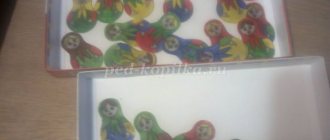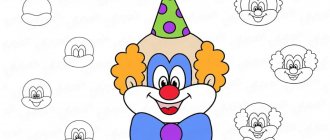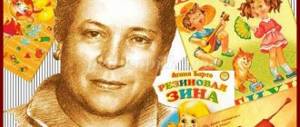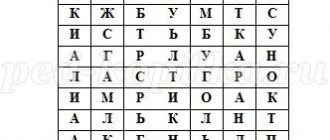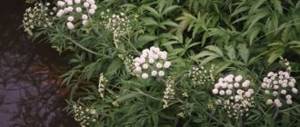Still life in a butcher shop
Peter Aertsen. The Butcher Shop, or the Kitchen with the Flight to Egypt Scene. 1551 North Carolina Museum of Art
The image of a butcher shop has traditionally been associated with the idea of physical life, the personification of the element of earth, as well as gluttony. Painted by Pieter Aertsen Pieter Aertsen ( 1508–1575) was a Dutch artist also known as Pieter the Long. Among his works are genre scenes based on gospel subjects, as well as images of markets and shops. Almost the entire space is occupied by a table laden with food. We see many types of meat: killed poultry and dressed carcasses, liver and ham, hams and sausages. These images symbolize excess, gluttony and attachment to carnal pleasures. Now let's turn our attention to the background. On the left side of the picture, in the window opening, there is a gospel scene of the flight to Egypt, which contrasts sharply with the still life in the foreground. The Virgin Mary hands the last loaf of bread to a beggar girl. Note that the window is located above the dish, where two fish lie crosswise (symbol of the crucifixion) - a symbol of Christianity and Christ. On the right in the background is a tavern. A cheerful group sits at a table by the fire, drinks and eats oysters, which, as we remember, are associated with lust. A butchered carcass hangs next to the table, indicating the inevitability of death and the fleeting nature of earthly joys. A butcher in a red shirt dilutes wine with water. This scene echoes the main idea of the still life and refers to the Parable of the Prodigal Son. Let us remember that in the Parable of the Prodigal Son there are several plots. One of them tells about the youngest son, who, having received an estate from his father, sold everything and spent the money on a dissolute life. The scene in the tavern, as well as the butcher shop full of dishes, speaks of an idle, dissolute life, attachment to earthly pleasures, pleasant for the body, but destructive for the soul. In the scene of the flight to Egypt, the characters practically turn their backs to the viewer: they move deeper into the picture, away from the butcher shop. This is a metaphor for escape from a dissolute life full of sensual pleasures. Giving up them is one of the ways to save the soul.
Flower still life
Until the 18th century, a bouquet of flowers, as a rule, symbolized frailty, because earthly joys are as transitory as the beauty of a flower. The symbolism of plants is especially complex and ambiguous, and books of emblems, popular in Europe in the 16th and 17th centuries, helped to grasp the meaning, where allegorical illustrations and mottos were accompanied by explanatory texts. Floral arrangements were not easy to interpret: the same flower had many meanings, sometimes directly opposite. For example, the narcissus indicated narcissism and was at the same time considered a symbol of the Mother of God. In still lifes, as a rule, both meanings of the image were preserved, and the viewer was free to choose one of the two meanings or combine them.
Floral arrangements were often supplemented with fruits, small objects, and images of animals. These images expressed the main idea of the work, emphasizing the motif of transience, decay, the sinfulness of everything earthly and the incorruptibility of virtue.
Jan Davids de Heem. Flowers in a vase. Between 1606 and 1684 State Hermitage
Painting by Jan Davids de Heem Jan Davids de Heem (1606–1684) was a Dutch artist known for his floral still lifes. At the base of the vase, the artist depicted symbols of frailty: withered and broken flowers, crumbling petals and dried pea pods. Here is a snail - it is associated with the soul of a sinner. Among other such negative images are reptiles and amphibians (lizards, frogs), as well as caterpillars, mice, flies and other living creatures crawling on the ground or living in the mud.. In the center of the bouquet we see symbols of modesty and purity: wildflowers, violets and forget-me-nots. They are surrounded by tulips, symbolizing fading beauty and senseless waste (growing tulips in Holland was considered one of the most vain activities and, moreover, expensive); lush roses and poppies, reminiscent of the fragility of life. The composition is crowned with two large flowers that have a positive meaning. The blue iris represents remission of sins and indicates the possibility of salvation through virtue. The red poppy, which was traditionally associated with sleep and death, changed its interpretation due to its location in the bouquet: here it denotes the atoning sacrifice of Christ. Even in the Middle Ages, it was believed that poppy flowers grew on the ground, watered by the blood of Christ.. Other symbols of salvation are grain spikelets, and a butterfly sitting on a stem personifies the immortal soul.
Jan Bauman. Flowers, fruits and a monkey. First half of the 17th century Serpukhov Museum of History and Art
Painting by Jan Bauman Jan (Jean-Jacques) Bauman (1601–1653) - painter, master of still life. Lived and worked in Germany and the Netherlands. “Flowers, Fruit and a Monkey” is a good example of the multi-layered meaning and ambiguity of a still life and the objects on it. At first glance, the combination of plants and animals seems random. In fact, this still life also reminds us of the transience of life and the sinfulness of earthly existence. Each depicted object conveys a certain idea: the snail and lizard in this case indicate the mortality of all earthly things; a tulip lying near a bowl of fruit symbolizes rapid fading; shells scattered on the table hint at unwise spending of money. In 17th-century Holland, collecting various kinds of “curiosities,” including shells, was very popular; and the monkey with the peach indicates original sin and depravity. On the other hand, a fluttering butterfly and fruits: bunches of grapes, apples, peaches and pears speak of the immortality of the soul and the atoning sacrifice of Christ. On another, allegorical level, the fruits, fruits, flowers and animals presented in the picture represent four elements: shells and snails - water; butterfly - air; fruits and flowers - earth; monkey - fire.
Still life in a fish shop
The fish still life is an allegory of the water element. Such works, like butcher shops, were often part of the so-called cycle of the first elements. In Western Europe, large pictorial cycles were common, consisting of several paintings and, as a rule, hanging in one room. For example, the cycle of the seasons (where summer, autumn, winter and spring were depicted with the help of allegories) or the cycle of the primary elements (fire, water, earth and air). and, as a rule, were created to decorate palace dining rooms. In the foreground are paintings by Frans Snyders Frans Snyders (1579–1657) was a Flemish painter, author of still lifes and baroque animal compositions. “Fish Shop” depicts a lot of fish. There are perches and sturgeon, crucian carp, catfish, salmon and other seafood here. Some have already been cut up, some are waiting their turn. These images of fish do not carry any subtext - they glorify the wealth of Flanders.
Frans Snyders. Fish shop. 1616 State Museum of Fine Arts.
A. S. Pushkin Next to the boy we see a basket with gifts that he received for St. Nicholas Day. In Catholicism, St. Nicholas Day is usually celebrated on December 6th. On this holiday, as at Christmas, children are given gifts. This is indicated by wooden red shoes tied to a basket. In addition to sweets, fruits and nuts, the basket contains rods - as a hint of upbringing with “carrot and stick”. The contents of the basket speak of the joys and sorrows of human life, which constantly replace each other. The woman explains to the child that obedient children receive gifts, and bad children receive punishment. The boy recoiled in horror: he thought that instead of sweets he would receive blows with rods. On the right we see a window opening through which we can see the city square. A group of children stands under the windows and joyfully greets the puppet jester on the balcony. The jester is an integral attribute of folk holiday festivities.
